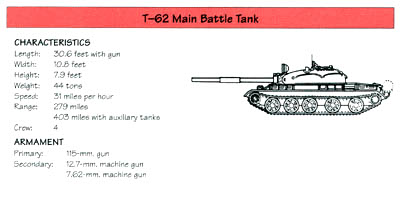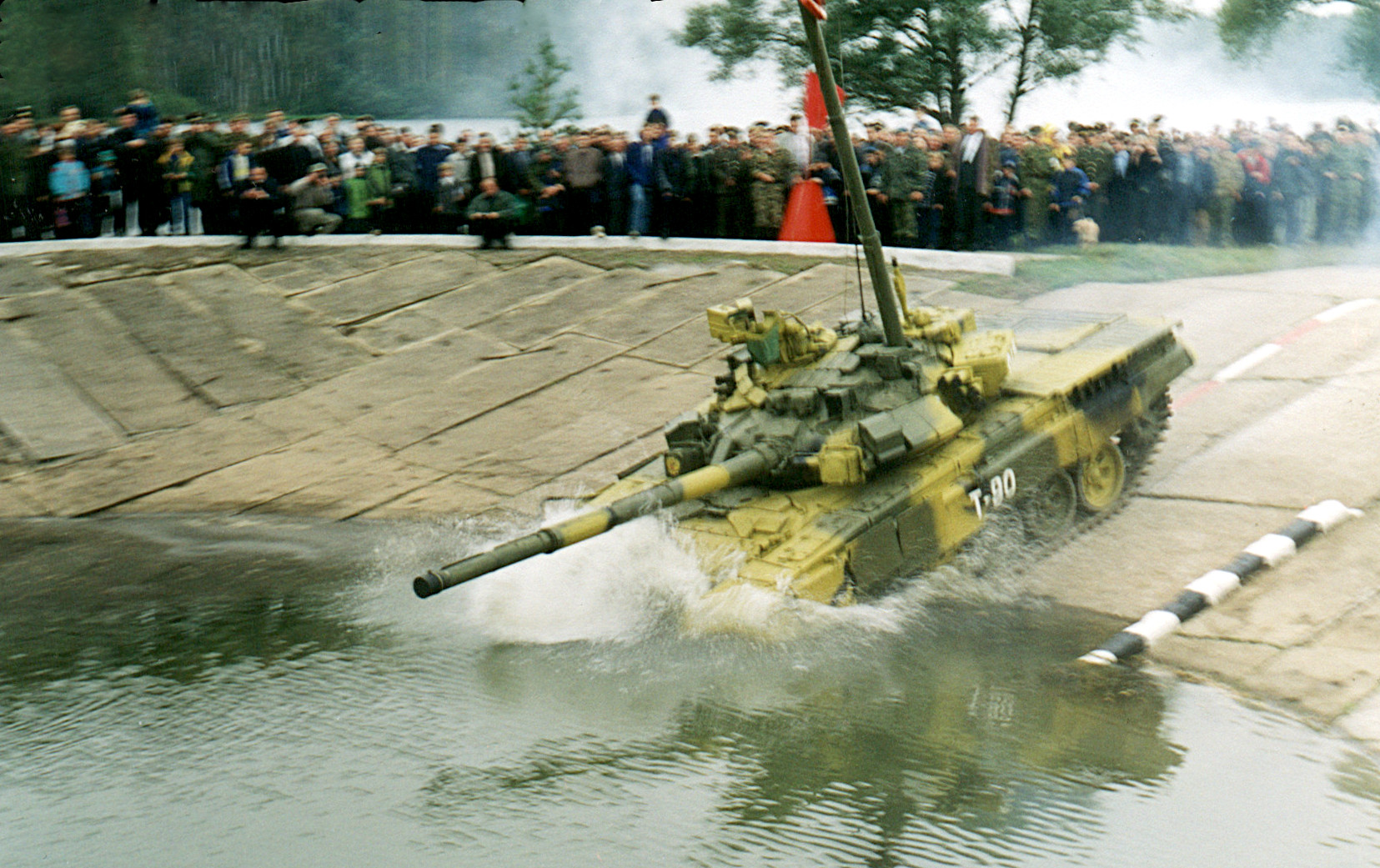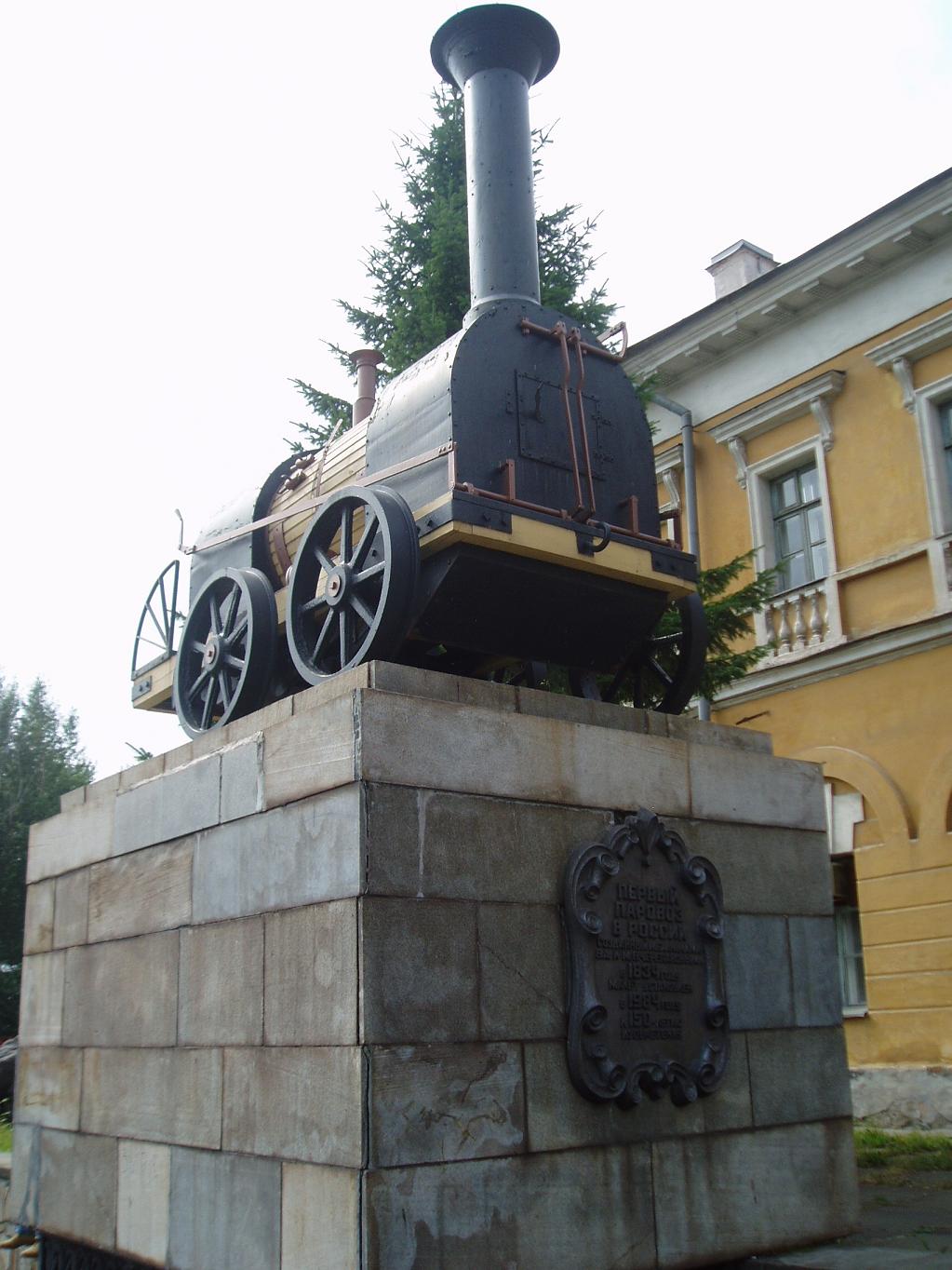|
T-54A
The T-54 and T-55 tanks are a series of Soviet main battle tanks introduced in the years following the Second World War. The first T-54 prototype was completed at Nizhny Tagil by the end of 1945.Steven Zaloga, T-54 and T-55 Main Battle Tanks 1944–2004, p. 6 From the late 1950s, the T-54 eventually became the main tank for armoured units of the Soviet Army, armies of the Warsaw Pact countries, and many others. T-54s and T-55s have been involved in many of the world's armed conflicts since their introduction in the second half of the 20th century. The T-54/55 series is the most-produced tank in history. Estimated production numbers for the series range from 96,500 to 100,000. They were replaced by the T-62, T-64, T-72, T-80 and T-90 tanks in the Soviet and Russian armies, but remain in use by up to 50 other armies worldwide, some having received sophisticated retrofitting. During the Cold War, Soviet tanks never directly faced their NATO adversaries in combat in Europe. H ... [...More Info...] [...Related Items...] OR: [Wikipedia] [Google] [Baidu] |
T-54/T-55 Operators And Variants
The T-54/T-55 tank series is the most widely used tank in the world and has seen service in over 50 countries. It has also served as the platform for a wide variety of specialty armored vehicles.Miller, David ''The great Book of Tanks'' Salamander Books London, England 2002 338-341 Halberstadt, Hans ''Inside the Great Tanks'' The Crowood Press Ltd. Wiltshire, England 1997 94-96 Current operators * – A number of T-55s were in service at the beginning of the 1992–1993 War in Abkhazia. These were all lost in the first four months of the fighting, at which point Abkhazian forces had captured 8 T-55s from the Georgians. At peak strength, there were 100 T-55s and T-72s in service. More than 50 T-55s and T-72s were in service in 2004. 87 T-55s and T-72s were in service before the 2008 South Ossetia war. Between 50 and 60 T-55s and T-72s are currently in service. * – 50 T-54s and 50 T-55s were ordered in 1961 from the Soviet Union and delivered between 1962 and 1964 (T-54s ... [...More Info...] [...Related Items...] OR: [Wikipedia] [Google] [Baidu] |
Uralvagonzavod
UralVagonZavod (russian: ОАО «Научно-производственная корпорация «УралВагонЗавод», , Open Joint Stock Company "Research and Production Corporation Uralvagonzavod") is a Russian machine-building company located in Nizhny Tagil, Russia. It is one of the largest scientific and industrial complexes in Russia and the largest main battle tank manufacturer in the world. The name ''Уралвагонзавод'' means ''Ural Railroad Car (wagon) Factory''. History The plant was built during 1931–1936 (mostly during the second Soviet five-year plan), launched on October 11, 1936, and named after Felix Dzerzhinsky. Initially it manufactured freight cars. After the German invasion of 1941, Joseph Stalin ordered hundreds of factories in Ukraine and western Russia to be evacuated east. The KhPZ Factory No. 183 in Kharkiv was moved to Nizhny Tagil by rail, and merged with the Dzerzhinsky Works, to form the Stalin Ural Tank Factory ... [...More Info...] [...Related Items...] OR: [Wikipedia] [Google] [Baidu] |
T-62
The T-62 is a Soviet main battle tank that was first introduced in 1961. As a further development of the T-55 series, the T-62 retained many similar design elements of its predecessor including low profile and thick turret armour. In contrast with previous tanks, which were armed with rifled tank guns, the T-62 was the first production tank armed with a smoothbore tank gun that could fire APFSDS rounds at higher velocities. While the T-62 became the standard tank in the Soviet arsenal, it did not fully replace the T-55 in export markets due to its higher manufacturing costs and maintenance requirements compared to its predecessor. Although it was followed by later models in successor states of the Soviet Union, the T-62 remained in reserve in the former USSR and in frontline use by other countries. Design features of the T-62 became standardized in subsequent Soviet and Russian mass-produced tanks. Development history The initial requirements By the late 1950s, Soviet c ... [...More Info...] [...Related Items...] OR: [Wikipedia] [Google] [Baidu] |
OKB-520
UralVagonZavod (russian: ОАО «Научно-производственная корпорация «УралВагонЗавод», , Open Joint Stock Company "Research and Production Corporation Uralvagonzavod") is a Russian machine-building company located in Nizhny Tagil, Russia. It is one of the largest scientific and industrial complexes in Russia and the largest main battle tank manufacturer in the world. The name ''Уралвагонзавод'' means ''Ural Railroad Car (wagon) Factory''. History The plant was built during 1931–1936 (mostly during the second Soviet five-year plan), launched on October 11, 1936, and named after Felix Dzerzhinsky. Initially it manufactured freight cars. After the German invasion of 1941, Joseph Stalin ordered hundreds of factories in Ukraine and western Russia to be evacuated east. The KhPZ Factory No. 183 in Kharkiv was moved to Nizhny Tagil by rail, and merged with the Dzerzhinsky Works, to form the Stalin Ural Tank Factory N ... [...More Info...] [...Related Items...] OR: [Wikipedia] [Google] [Baidu] |
T-64
The T-64 is a Soviet tank manufactured in Kharkiv, and designed by Kharkiv Morozov Machine Building Design Bureau. The tank was introduced in the early 1960s. It was a more advanced counterpart to the T-62: the T-64 served in tank divisions, while the T-62 supported infantry in motorized rifle divisions. It introduced a number of advanced features including composite armour, a compact engine and transmission, and a smoothbore 125-mm gun equipped with an autoloader to allow the crew to be reduced to three so the tank could be smaller and lighter. In spite of being armed and armoured like a heavy tank, the T-64 weighed only . Soviet military planners considered the T-64 the first of the third-generation tanks and the first main battle tank. These features made the T-64 expensive to build, significantly more so than previous generations of Soviet tanks. This was especially true of the powerpack, which was time-consuming to build and cost twice as much as more conventional design ... [...More Info...] [...Related Items...] OR: [Wikipedia] [Google] [Baidu] |
D-10 Tank Gun
The D-10 is a Soviet 100 mm tank gun developed in late World War II. It originally equipped the SU-100 tank destroyers and was later selected for the T-55 tank, equipping these as late as 1979. On the T-55 the D-10 continues to be in active service in many countries. History At the beginning of 1944, the T-34 tank's F-34 76.2 mm tank gun was replaced by a more powerful 85 mm gun. This rendered the year-old SU-85 tank destroyer effectively obsolescent, since its D-5T 85 mm gun was now also fielded by a more flexible medium tank. F. F. Petrov's Design Bureau at Artillery Factory No. 9 was assigned the task of producing a 100 mm anti-tank gun that could be used on the SU-85 chassis, for the proposed SU-100. To achieve this goal, Petrov's team modified the S-34 naval gun for use in an armoured fighting vehicle. The D-10 is a high-velocity gun of 100 mm calibre (bore diameter), with a barrel length of 53.5 calibres. A muzzle velocity of 895&nb ... [...More Info...] [...Related Items...] OR: [Wikipedia] [Google] [Baidu] |
T-80
The T-80 is a main battle tank (MBT) that was designed and manufactured in the former Soviet Union and manufactured in Russia. The T-80 is based on the T-64, while incorporating features from the later T-72. The chief designer of the T-80 was Soviet engineer Nikolay Popov. When it entered service in 1976, it was the second MBT in the world to be equipped with a gas turbine engine, after the Swedish Stridsvagn 103, and the first to use it as a main propulsion engine. The T-80U was last produced in 2001 in a factory in Omsk, Russia. The Ukrainian T-80UD diesel engine variant continued to be produced in Ukraine. The T-80 and its variants are in service in Belarus, Cyprus, Egypt, Kazakhstan, Pakistan, Russia, South Korea, Ukraine and Uzbekistan. Ukraine further developed the T-80UD as the T-84. History Development The project to build the first Soviet turbine powered tank began in 1949. Its designer was A. Ch. Starostienko, who worked at the Leningrad Kirov Plant (LKZ). T ... [...More Info...] [...Related Items...] OR: [Wikipedia] [Google] [Baidu] |
Warsaw Pact
The Warsaw Pact (WP) or Treaty of Warsaw, formally the Treaty of Friendship, Cooperation and Mutual Assistance, was a collective defense treaty signed in Warsaw, Poland, between the Soviet Union and seven other Eastern Bloc socialist republics of Central and Eastern Europe in May 1955, during the Cold War. The term "Warsaw Pact" commonly refers to both the treaty itself and its resultant defensive alliance, the Warsaw Treaty Organization (WTO). The Warsaw Pact was the military complement to the Council for Mutual Economic Assistance (Comecon), the regional economic organization for the socialist states of Central and Eastern Europe. The Warsaw Pact was created in reaction to the integration of West Germany into the North Atlantic Treaty Organization (NATO)"In reaction to West Germany's NATO accession, the Soviet Union and its Eastern European client states formed the Warsaw Pact in 1955." Citation from: in 1955 as per the London and Paris Conferences of 1954.The Warsaw P ... [...More Info...] [...Related Items...] OR: [Wikipedia] [Google] [Baidu] |
T-72
The T-72 is a family of Soviet/Russian main battle tanks that entered production in 1969. The T-72 was a development of the T-64, which was troubled by high costs and its reliance on immature developmental technology. About 25,000 T-72 tanks have been built, and refurbishment has enabled many to remain in service for decades. It has been widely exported and has seen service in 40 countries and in numerous conflicts. The T-90 introduced in 1992 is a development of the T-72B; production and development of various modernized T-72 models continues today. Development Development from the T-64 The T-72 was a product of a rivalry between design teams. Morozov KB was led by Alexander Morozov in Kharkiv. Uralvagon KB was led by Leonid Kartsev in Nizhny Tagil. To improve on the T-62, two designs based on the tank were tested in 1964: Nizhny Tagil's Object 167 (T-62B) and Kharkiv's Object 434. Ob. 434 was a technically ambitious prototype. Under the direction of Morozov in Kharki ... [...More Info...] [...Related Items...] OR: [Wikipedia] [Google] [Baidu] |
Victory Park (Tolyatti)
Victory Park (russian: Парк Победы) is a memorial park in the Auto Factory District (russian: Автозаводский район, Avtozavodsky rajon) of Tolyatti, Russia. The park is dedicated to the Soviet victory in World War II. Among the monuments and sculptures in the park are: *The Victory Monument (1985) by Simon Winograd *''Monument to the Soldiers of the Afghan War'' (1994) by N. I. Kolesnikov *''On The Beach'' (1987) by V. V. Kravchenk References {{coord, 53.511, 49.274, type:landmark_region:RU, display=title Parks in Tolyatti World War II memorials in Russia Geography of Samara Oblast Tourist attractions in Samara Oblast Soviet military memorials and cemeteries ... [...More Info...] [...Related Items...] OR: [Wikipedia] [Google] [Baidu] |
T-90
The T-90 is a third-generation Russian main battle tank. It uses a 125mm 2A46 smoothbore main gun, the 1A45T fire-control system, an upgraded engine, and gunner's thermal sight. Standard protective measures include a blend of steel and composite armour, smoke grenade dischargers, Kontakt-5 explosive reactive armour (ERA) and the Shtora infrared anti-tank guided missile (ATGM) jamming system. The T-90 was designed and built by Uralvagonzavod, in Nizhny Tagil, Russia. It entered service with the Russian Army in 1992. Development The T-90 has its origins in a Soviet-era program aimed at developing a single replacement for the T-64, T-72 and T-80 series of main battle tanks. The T-72 platform was selected as the basis for the new generation of tank owing to its cost-effectiveness, simplicity and automotive qualities. The Kartsev-Venediktov Design Bureau from Nizhny Tagil was responsible for the design work and prepared two parallel proposals—the ''Object 188'', whic ... [...More Info...] [...Related Items...] OR: [Wikipedia] [Google] [Baidu] |
Nizhny Tagil
Nizhny Tagil ( rus, Нижний Тагил, p=ˈnʲiʐnʲɪj tɐˈgʲil) is a city in Sverdlovsk Oblast, Russia, located east of the boundary between Asia and Europe. Population: History The prehistory of Nizhny Tagil dates back to the mid-16th century, when the Stroganovs received the right to possess land by the Kama and Chusovaya basins. In 1579 they founded the first settlement, the Utkin sloboda, by the river Utka, the mouth of Chusoya. Fateyevo, the first Russian village in the Tagil region, was founded in 1665. In 1696, by the order of Tsar Peter the Great, the Vysokogorsky iron ore quarry was opened. Voevode Dmitry Protasyev was elected to search for iron and magnetic ores. The deposits were particularly rich, and included lodes of pure magnetic iron. The surrounding landscape provided everything needed for a successful and productive mining and smelting operation — rivers for transport, forests for fuel, and suitable climate. Several years later, the Tsar intr ... [...More Info...] [...Related Items...] OR: [Wikipedia] [Google] [Baidu] |



.jpg)


.jpg)


